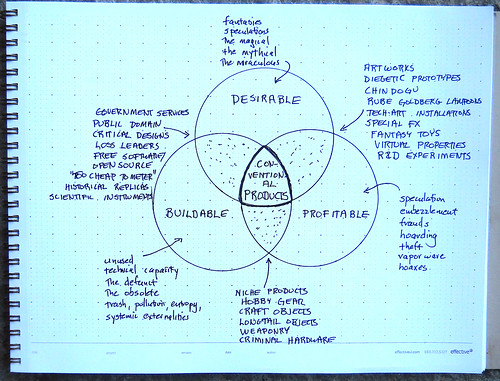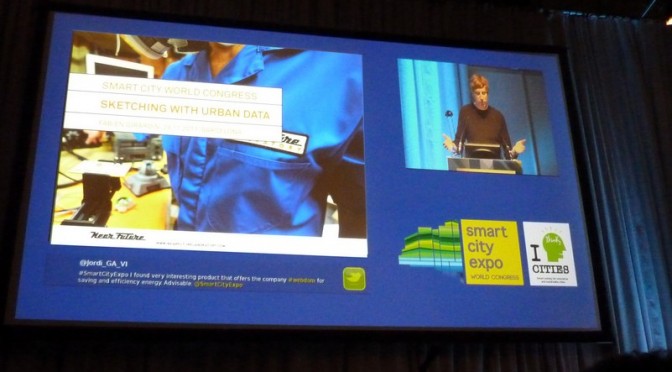Well. Another *tardy weeknote. Doesn’t matter, I suppose. It’s just a log entry.
Last week was a busy one. At the Nokia studio there were many visitors and engagements with the work in the Advanced Design studio. It was a chance to get direct feedback from colleagues on the work that we’re doing and figure out what language around the work, like..you know..works. Oftentimes projects will start with a bit of a hunch and a nudge and a curiosity with lots of “I dunno..” half-baked thoughts about what is leads the projects in a particular way. Practicing describing the project over and over to visitors begins to refine and hone the thinking and begins to percolate up the significant insights, principles, design axioms. Presenting work eight times over a couple hours does a bit of brain-polishing. One thing I thought a bit about and brought into the discussion — something I learned for the sharing eight or nine times: It’s a thing that some things don’t get powered off, like digital connectors. At least for me, it isn’t a ritual to shutdown computers, phones, iPads, ebook readers. They get put to the side or asked to go settle down a bit, for me. Another thing — audio seems to always want to go up-and-to-the-right in its fidelity. It’s Hi-Fi..not Lo-Fi..the next iteration of sound reproduction technology won’t be worse — or won’t advertise itself as worse. That’s interesting. What’s the inverse of that, and what sort of world would it be where one could settle for Lo-Fi, or where Lo-Fi would make perfectly good sense. If that thought of an inverted world like that makes you think I’m crazy, or if you can’t imagine why such a question is important, or if you still think the Eurozone couldn’t completely disappear — then I don’t think you get what we do here.)
It’s a luxury to start something in that fashion. The freedom and trust to follow one’s curiosity often always leads to better things. The question was asked several times — I was sharing Project Audio — where does this go? How does it *end up in things*? And now with enough projects done it becomes easier to provide examples of how we work and how ideas from seemingly no place end up in a place with the integrity and principles of the thing-from-nowhere actually in there. It’s a translation of big principles and provocatively simple statements into a little nudge and refinement or rethinking of something. There’s still the large-ish gap between ways of working that exists between teams that work at a very fast cadence of product-ion and teams that are meant to look around a corner or who are incentivized to think a bit to the side and provoke. Still — sometimes if you whisper in the ear of the right people over and over again, you get that nudge to happen. Good ideas are worth saying many, many times.
What else?
Will stubbed out a bit of code for an *App I’ve been wanting to do for a bit. It’s a small simple thing, really. I’m sure it’s been done. Maybe its better that I do it to get back into the muck of Xcode. It simply shows a photo from a year ago. I’m interested in time and representations of it and the little puff of delight that comes from recollecting a moment and going back there. That came from Photjojo’s Time Capsule — which I love. It’s deceptively simple of course. But, it had me experimenting with seeding my future with the things I’d like to remember and go back to. That behavior is intriguing. Why an *App? *shrug. I need to get more comfortable writing code to do experiments and projects.
Berg released Little Printer which caused the Berg-o-spheric Cloud to rumble thunder. Curious device. I like the making of small things that do one thing. It got us thinking about the possible meanings of the Venn diagram from a couple of weeks ago.
Things go in certain places — where would the Little Printer go? It’s a product certainly — perhaps in the middle. It is not least-common denominator crap-product, so maybe not squarely in the center. It’s way more substantial and meaningful than SkyMall key-hiding stones or back scratchers with your favorite sports team logo on it.
I imagine long, slender 22 year old boys with grown-man full-beards, MacBook Pros and exquisitely curated and color’d fixies loving Little Printer. Where would it go in the graph of future things?

It’s a thing manufactured and designed to be produced — it’s not a realized thought-provoker or evocative knowledge object. It works, so it isn’t a prop/MacGuffin. It got me thinking about things that are meant to circulate an idea and start a conversation that may push or tip or tweak the relevant arena in new directions. It may not work, or it may work and it may even say — I’m going to work and be super relevant and live on people’s shelves..live in the world, but then doesn’t really. Or does, and then gives out a last shriek and death-cry and then remain silent forever, as Fabien described the last moments of his Nabaztag. This isn’t a normative assessment, just wondering about the category of things that change the way people understand something like the old, sad, forgotten printer and then it gets reinvigorated and reassessed and remade to be something fun and different, like Little Printer.
That’s it.











